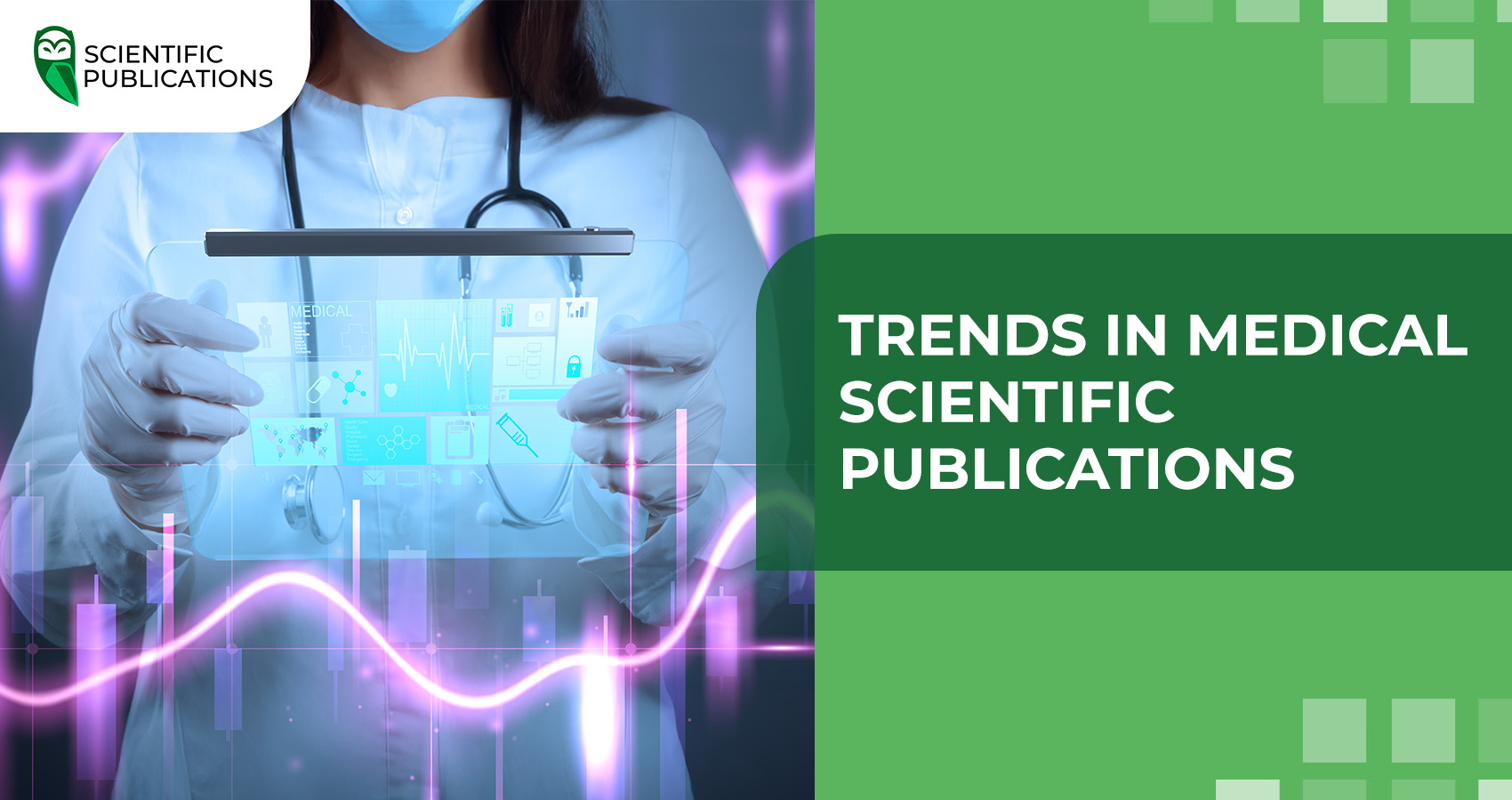Modern trends in medical research publications are shaped by the latest technologies, requirements for research transparency, and global health challenges. It is important for young scientists to take these trends into account in order to successfully integrate into the global scientific community and ensure a high level of scientific reputation.

In the modern scientific space, medical science is a leader in terms of the number of publications, research funding, and impact on practice. In our previous article, we discussed the main types of medical publications. Today, our article focuses on the main trends in medical publications in 2025.
Relevant directions of scientific publications in medicine
Advanced biomarker discovery
Medical research methods are often slow and energy-consuming due to the need to accurately predict the course of a disease and adapt therapeutic strategies accordingly. This approach is not always effective, which reduces the quality of patient care. At the same time, these challenges are being overcome through the introduction of innovations, in particular by identifying specific biological markers in the human body.
Modern technologies make it possible to accurately detect disease at early stages, monitor its development and evaluate the effectiveness of therapy by analysing biomarkers. Their precise identification paves the way for the development of highly specific treatments, which contributes to the introduction of personalised medicine. This ensures the most effective therapy, adapted to the individual genetic and biochemical characteristics of each patient.
Special attention is paid to identifying new biomarkers for the early diagnosis of cancer, cardiovascular and neurological diseases.
Personalised medicine
Personalised medicine is an approach focused on creating more accurate prognostic, preventive, diagnostic, and treatment solutions based on individual physiological, environmental and behavioural characteristics of the patient. Thanks to the development of the latest technologies that allow us to study in detail the specifics of the course of diseases in each individual, this industry has received a powerful impetus for further growth.
Today, the personalised approach is significantly enhanced by the introduction of tools such as DNA sequencing, multiomics, proteomics and bioinformatics.
Artificial intelligence and machine learning
In 2025, there will be a growing integration of informatics into the life sciences, which will help reduce the cost of genome sequencing and promote the active implementation of proteomics, multiomics, and spatial biology. Thanks to digital technologies, the limitations of laboratory infrastructure are gradually becoming irrelevant: access to large databases, analytics, and interpretation of results are made possible by artificial intelligence (AI).
AI algorithms are widely used in medical diagnostics, in particular to automatically recognise pathologies in images such as X-rays, MRIs or dermatological results. In the fields of radiology, pathology, and dermatology, AI improves the accuracy and speed of diagnosis. Machine learning models are also used to predict treatment outcomes, assess disease risks, and improve hospital resource management.
Researchers are constantly improving sophisticated algorithms capable of detecting patterns in anonymised medical data. For example, in the field of cardiology, algorithms built into implanted heart monitors allow for the high accuracy of detecting heart rhythm disorders such as atrial fibrillation (AF), which is an important risk factor for stroke and heart failure. Early detection of such conditions allows for timely medical or surgical treatment.
In addition, the latest algorithms are able to analyse cardiac data and detect the first signs of potentially curable cardiovascular diseases even before the patient has clinical symptoms.
Development of new medicines
The development of new medicines is accompanied by a number of challenges, including lengthy and unpredictable processes, significant financial costs and a high risk of failure in the final stages of clinical trials. To overcome these barriers, modern pharmaceutical science is increasingly introducing innovative approaches based on computational modelling, high-throughput screening and predictive analytics using artificial intelligence.
These technologies allow us to model the interaction of drug compounds at the molecular level at the early stages of research, identify possible side effects in a timely manner and improve the efficacy profile of potential drugs. This makes the drug development process more predictable, faster and more resource-efficient, increasing the likelihood of successful therapeutic solutions.
One of the leading areas in medical research is the development of drugs based on in-depth analysis of the biological mechanisms of disease onset and progression. Scientists focus on molecular and cellular processes, including genetic mutations, immune system dysfunctions and metabolic disorders. This allows us to create drugs that act on specific targets, reducing side effects and increasing the effectiveness of treatment.
Mental health
Medical science is increasingly focusing on mental health. Research into anxiety and depression is becoming a priority, especially in the post-pandemic world. Scientific publications cover new methods of diagnosis, therapy and prevention of mental disorders.
Immunotherapy and oncology
One of the most dynamic areas of modern medicine is immunotherapy, in particular methods based on the use of chimeric antigen receptor T cells (CAR-T) and the development of anti-cancer vaccines. Scientific publications in this field are increasingly focused on assessing the clinical efficacy, safety profile and potential long-term effects of innovative therapeutic approaches in the treatment of cancer.
Current trends in the field of scientific publications
- Multidisciplinarity. There is a clear shift towards a multidisciplinary approach. Medical research is increasingly going beyond the traditional framework, integrating knowledge from bioinformatics, artificial intelligence, social and environmental sciences. This combination contributes to the formation of new insights into the factors that affect human health. Scientific journals actively support papers that demonstrate innovative approaches and synthesis of various scientific fields.
- Open Access. The publication of research results in the Open Access format is becoming increasingly widespread. This facilitates the rapid dissemination of scientific information, expanding the readership and increasing the level of citations. At the same time, many international grant programmes require that research be published exclusively in open sources.
- Ethical standards. Attention to ethical standards and scientific integrity is growing. Journals increasingly require a transparent description of the research methodology, tools used, and data sources, which allows for repeated verification of results.
- Increase in the number of co-authors. Another notable trend is the increase in the number of co-authors in publications. Research articles are often the result of the collective work of scientists from different countries, which indicates a high level of international cooperation and the development of global scientific networks.
Medical scientific publications in 2025 will be characterised by a high level of technological integration, an interdisciplinary approach and strengthened ethical standards. Young scientists should take these trends into account to effectively start and develop their scientific careers.
Scientific Publications will help you prepare and publish your article in medicine. Our highly qualified specialists will accompany you at every stage of the publication process and provide post-publication support. Ask all your questions during a free consultation with our manager. To do this, fill out the form below, and we will contact you as soon as possible. Let's work together for a successful publication!





